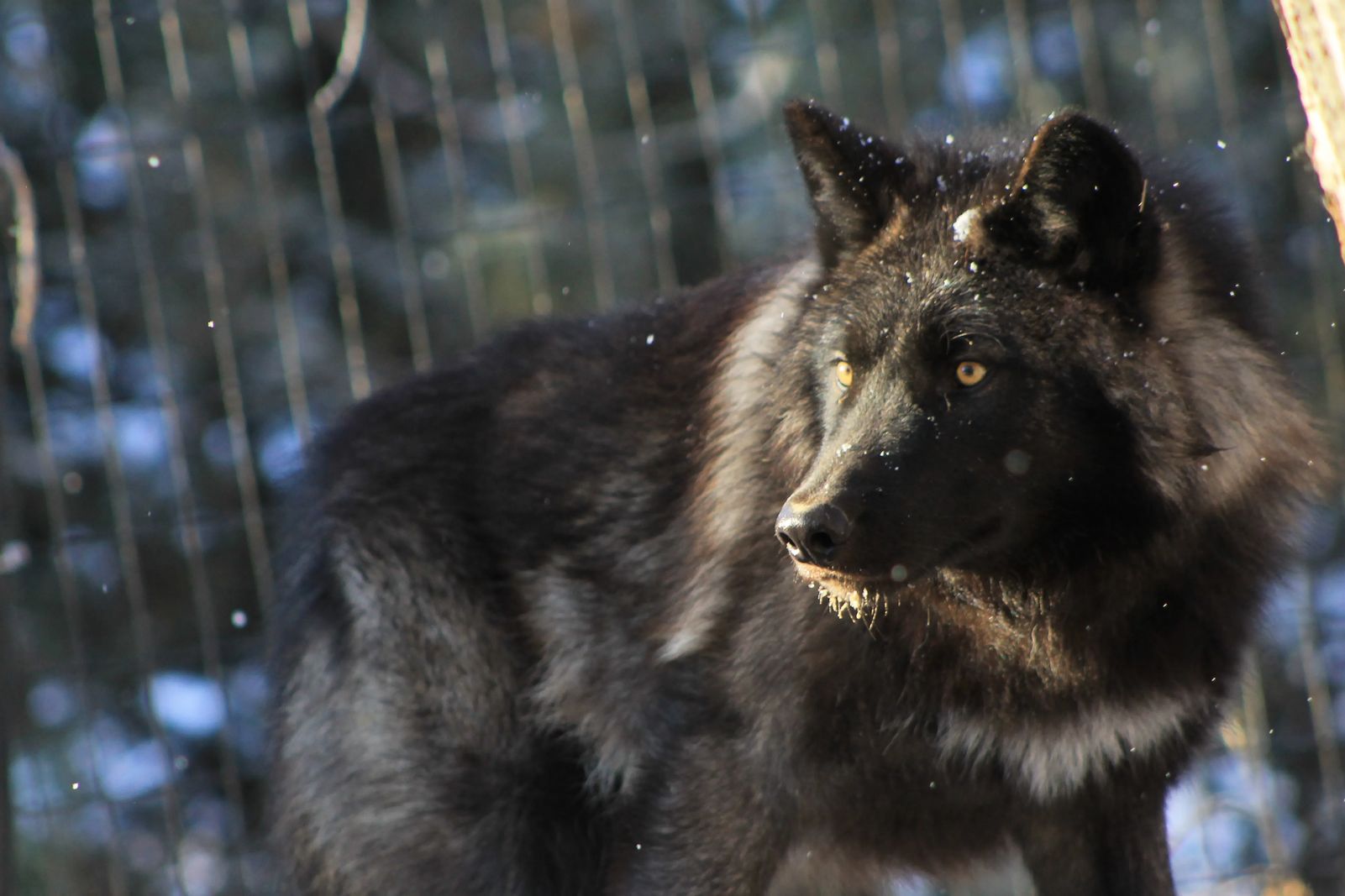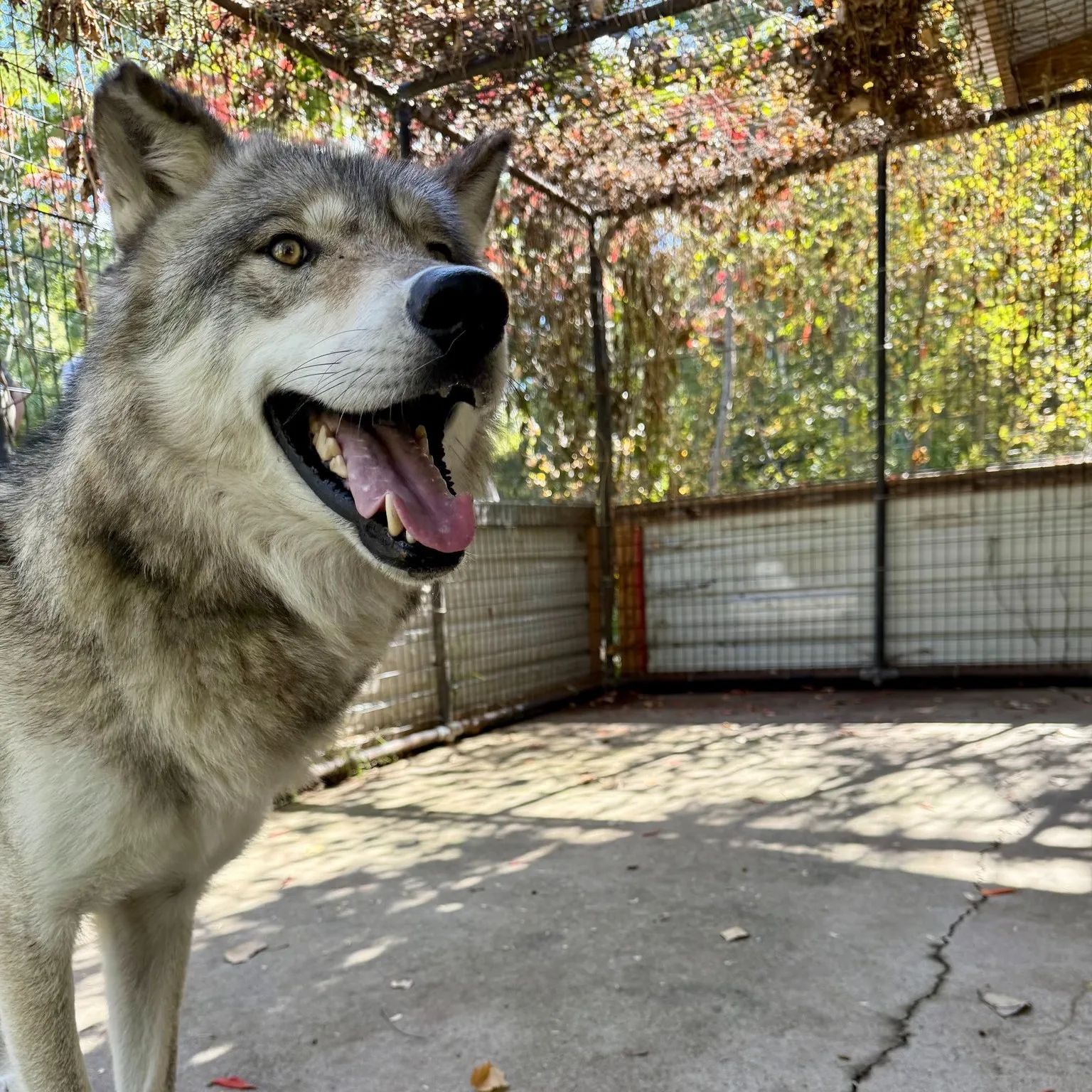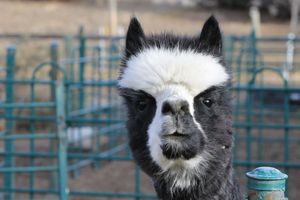
Grey Wolf
Canis lupus
Grey wolves, or timber wolves, are the largest members of the canine family. There are currently thirty subspecies of grey wolves which include more common species like red wolves, arctic wolves, and even the dingo. Grey wolves are not just grey and can come in different morphs, or colors, ranging anywhere from a cream-white color to a darker black color. Grey wolves are highly adaptable and can survive in almost all habitats within the Northern Hemisphere and their size will depend on where they live. Today they are mostly found in the wilderness and remote areas, especially in Canada, Alaska, and the northern United States.
Click HERE for a Grey Wolf Activity Sheet!
Our Current Residents
Thor (top), Male- Born on April 8, 2020
Thor was born at Bear County USA in Rapid City, South Dakota before coming to ZooMontana in September of 2025 as a companion for his brother Onyx. Thor is a gray, or timber, color.
Onyx (bottom), Male- Born on April 8, 2020
Onyx was born at Bear County USA in Rapid City, South Dakota before coming to ZooMontana in October 2020. Onyx is a dark black color.
Taxonomy
- Kingdom: Animalia
- Phylum: Chordata
- Class: Mammalia
- Order: Carnivora
- Family: Canidae
- Genus: Canis
- Species: Canis lupus
Animal Facts
Carnivore: mainly eat both large (elk, deer, moose) and small mammals (rodents, hares)
Population Status: Endangered - Wolves are being persecuted in the western states, including Montana. Incorrect information is often cited in terms of their effects on livestock and game populations. In truth, native wolves are critical to a healthy ecosystem. For more information, check out our partner organization Team Wolf.
Habitat: rocky areas, shrubland, grassland, desert, wetlands, forest, artificial/ terrestrial
Activity: crepuscular- mostly active during dusk and dawn


















































